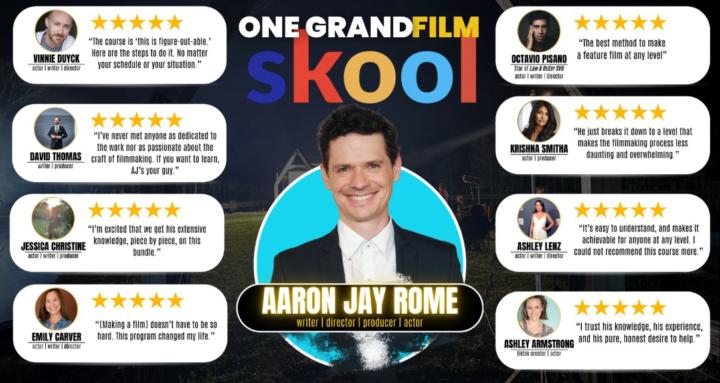Aug 8 • 🙋 Q&A 🙋♀️
Tactical Recap From Tonight's Q&A!
- Stop Relying on the “Lottery System”
- Screenplay competitions, agents, and cold submissions are almost never a reliable path in.
- Even major comp winners often don’t get produced or staffed.
- Many competitions are shutting down (Coverfly/Screencraft consolidations, Stage 32 issues) because there’s no consistent pipeline from “script” to “produced.”
- Most successful writers produce their own work first, build proof of execution, and ladder up.
- Make Your First Film Small – and Actually Finish It
- Avoid paying everyone on your first project just to “look professional.”
- First-timers often blow $50K–$200K on films that never launch careers.
- Learn the process end-to-end before raising serious money.
- The only four essentials: Picture (camera), Sound (dialogue recording), Story, Performance.
- Everything else is “fluff” you can earn later.
- A finished, compelling feature – even ultra-low budget – is your proof for the next raise.
- Leverage What You Already Have
- Build projects around available locations, collaborators, and gear.
- Examples from the call: $1,000 SAG feature in 4 locations; $1,600–$2,000 feature in progress; Sean Baker shot Tangerine on iPhones with selfie sticks.
- Building Traction with Existing IP (Books, Stories, Novels)
- Skip AI “movie” versions if your goal is live-action.
- Build a fan base for the book through targeted podcast appearances.
- Use a “podcast lead list scraper” to find relevant shows and pitch yourself.
- Direct all listeners to your book (Amazon link).
- Drive downloads, purchases, and reviews to create leverage for film conversations.
- Producers buy fan bases and proof more than raw ideas.
- Vetting People Before You Work with Them
- Use IMDb Pro: check StarMeter, review credits, see who reps them.
- Red flag: direct contact info with no gatekeeper can mean low demand.
- Cross-reference reputations before committing.
- Clarifying Career Goals to Avoid Creative Overload
- Define your “lead domino” – the one project that, if completed, makes the others easier.
- Build something that showcases your brand and voice clearly.
- Strawberry Mansion is a good example – launched directors into multi-million dollar work off a $100K surreal comedy.
- Agents and producers invest in creators, not just ideas.
- Pitch Deck Insights
- Have two versions:
- Visual cohesion and consistent tone are key.
- AI-assisted tools can build decks from your script in hours, but still customize to your voice.
- Casting High-Quality Talent on a Budget
- BreakdownExpress.com (backend to Actors Access) gives access to SAG and top non-union actors nationwide.
- SAG micro-budget agreement: under $20K total, no daily minimum.
- SAG ultra-low budget: $249/day (about $310 with fringes).
- Collaborators may work for less or free if offered creative opportunity and proof of work.
- Producer Relationships and Budget Negotiations
- If a producer optioned your script but stalled:
- Benefits: their name and connections help with festivals and distribution.
- Reverse Engineer Your Budget
- Don’t ask “What will this cost?” without context.
- Give your target budget and have a line producer work backwards.
- In the Proof Project model, scripts are designed around what’s already free or cheap.
Bottom line: The fastest way forward isn’t waiting for permission – it’s making the smallest possible finished feature that proves you can execute. That proof is your currency for every bigger project to come.
5
5 comments

skool.com/ogfilmskool
A group for filmmakers dedicated to making their first feature film without fundraising. Courses, calls and coaching to get your film over the line.
Powered by





